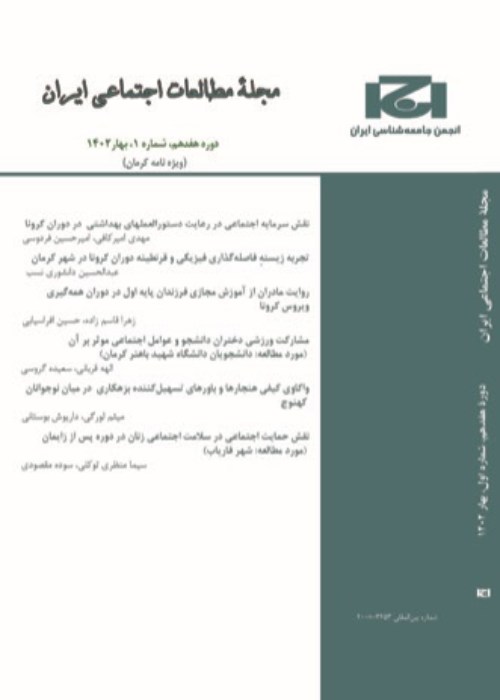Urban Neighborhood Regeneration Based on Community Development Planning Framework
Author(s):
Abstract:
Following evolution of socio-spatial structure of great cities, there have been appliedefforts to develop macro plans for urban development concentrating on reformingthe internal fabric of these cities and increasing their institutional capabilities. Aglance over the nature of urban development plans reveals that their main focus hasbeen the improvement of urban structure and application of methods that wouldresult in enhancement of overall quality of life in the developed sections urbansetting at the expense of neglecting small-scale urban issues, activities andinstitutions in less developed sections. For this reason many urban networksparticularly those located in marginal areas could not use the benefits of macrourban plans. An increasing trend in the immigrants population, on the one hand, andthe rapid growth of other sections, such as in service and housing, have resulted inan intensification of socio-spatial imbalance in which the populations of marginalneighborhood have been at loss. A number of facts are demonstrative of this point,as far as problems such as unequal socio-spatial structure, poor services, anddistribution system are concerned. These underdeveloped cities are mostly located inthird world countries that are sadly experiencing these problems. Moreover, suchproblems are the origin of many other urban maladies, on the level of city, such associal inequality, urban crimes, delinquency, social abnormalities, and urban povertyand so on.In recent years the attention is shifted toward micro scale of analysis and planningprocess. Urban neighborhood as a unit of analysis and management became thefocus of many research works. Particularly there has appeared an attention toregeneration poor urban neighborhood as the foundation of development of generalstructure of city. Urban neighborhood regeneration based on of communitydevelopment planning framework is a way in which planners could attempt torebuild the internal structure of poor neighborhoods, change the quality of people,and increase the possibilities of making services and provisions affordable. After thefailure of the use of the macro level of analysis it seems necessary to apply a newapproach in the analysis and production of a sustainable policy for future of urbandevelopment which can be concentrated on neighborhood-based and citizen-orientedrather than concentrating on an overall system-improvement. This article argues thatthe Community Development Planning can be conceptualized as a new approachand it means to reconstruction of poor areas in developing cities. However, in thispaper the main aim is to develop the sociological aspect of community developmentplanning approach and to direct attention towards its results for the city life andurban regeneration in general.
Language:
Persian
Published:
Journal of Iranian Social Studies, Volume:2 Issue: 2, 2009
Pages:
99 to 123
magiran.com/p665927
دانلود و مطالعه متن این مقاله با یکی از روشهای زیر امکان پذیر است:
اشتراک شخصی
با عضویت و پرداخت آنلاین حق اشتراک یکساله به مبلغ 1,390,000ريال میتوانید 70 عنوان مطلب دانلود کنید!
اشتراک سازمانی
به کتابخانه دانشگاه یا محل کار خود پیشنهاد کنید تا اشتراک سازمانی این پایگاه را برای دسترسی نامحدود همه کاربران به متن مطالب تهیه نمایند!
توجه!
- حق عضویت دریافتی صرف حمایت از نشریات عضو و نگهداری، تکمیل و توسعه مگیران میشود.
- پرداخت حق اشتراک و دانلود مقالات اجازه بازنشر آن در سایر رسانههای چاپی و دیجیتال را به کاربر نمیدهد.
دسترسی سراسری کاربران دانشگاه پیام نور!
اعضای هیئت علمی و دانشجویان دانشگاه پیام نور در سراسر کشور، در صورت ثبت نام با ایمیل دانشگاهی، تا پایان فروردین ماه 1403 به مقالات سایت دسترسی خواهند داشت!
In order to view content subscription is required
Personal subscription
Subscribe magiran.com for 70 € euros via PayPal and download 70 articles during a year.
Organization subscription
Please contact us to subscribe your university or library for unlimited access!


